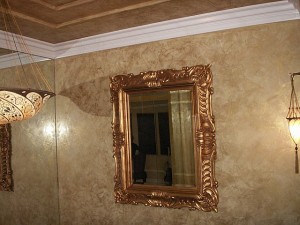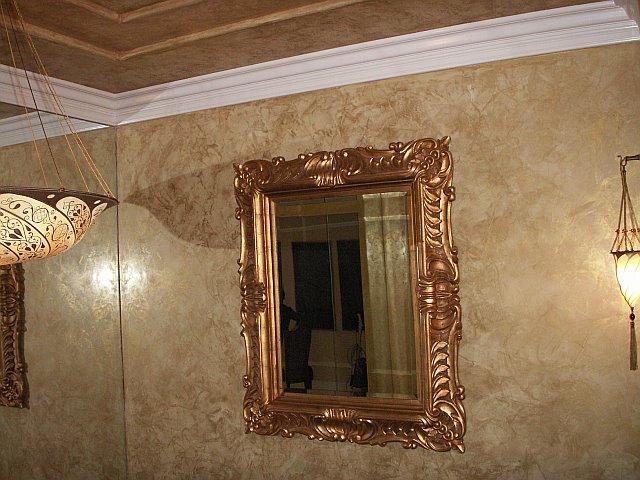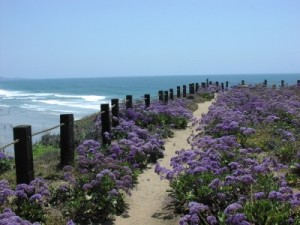The Elegance of Venetian Plaster

When first entering this newer San Diego luxury home, we were amazed by its wall and ceiling finishes. Walking slowly from room to room, one can run fingers over the cool burnished walls and the gray stone door arches. The touch is smooth and cool. Even the ceilings and dome gave the impression that we had indeed been transported to a Venetian villa.
Had we not known the artisan responsible for this masterpiece, we would never have guessed an underlying truth: These walls were nothing more than standard drywall that had been transformed by a clever Polish home painter and artist who specializes in exquisite surface finishes.
Greg Sieminski explains that Europeans have been creating beautiful walls for centuries utilizing limestone plasters softly colored with natural elements. He
studied these walls in Mediterranean countries, and wondered how the rich, aged patina could be duplicated in fine San Diego homes. It took several years, but Greg was able to perfect his replications of fine Venetian plaster to the delight and amazement of his clients.
So just how is Venetian plaster made? Greg explained that the 1300 year-old process starts with the selection of special limestone from Italian quarries and rivers. The limestone is then fired in a large and very hot kiln, which causes chemical changes within the limestone itself. The result? The super-heated stones turn to putty when placed in water. The painter goes on to describe how this putty is wet-seasoned for up to a year before being processed as a finishing plaster.
The end result, says Greg, is a finely milled limestone putty that is even finer than face powder. This cultivated material can be further embellished with finely-ground marble, which yields an ancient building material that can be burnished to a low sheen or rubbed to a high polish. Additionally, he will occasionally add granular material so that he can recreate stone finishes.
Venetian plaster, he explains, is not faux painting, as hobbyists commonly refer to this style of painting. The product is not paint. It is an old finishing technique that works well in contemporary homes. He adds that Venetian plaster can be used outdoors as well, with few limitations.







I have a soft stone fountain in my yard that is deteriorating, can I use venetian plaster to rejuvenate the fountain? I live in Colorado, will the weather require any adjustments?
Keri,
Greg Sieminski is San DIego’s premier Venetian Plaster master and he informs me that Venetian plaster–sadly– will not restore your soft stone fountain. Additionally, this finish is not water resistant and would be a poor choice for exterior finishes. I would do more research about alternatives–and if you find one, please share with us!